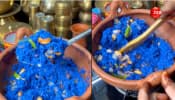Washington: Astronomers may have spotted an exoplanet that ‘oozes’ supercritical liquid – thanks to NASA’s Spitzer Space Telescope.
It has been known that some exoplanets orbit two stars, others are getting eaten alive, some have hotspots and others are darker than coal, but this is the weirdest behaviour of alien worlds discovered yet.
The exoplanet in question is 55 Cancri e and it orbits a star 40 light-years from Earth. Having been detected in 2004, it is very well known to astronomers, Discovery News reported.
Due to its rapid orbit (of only 18 hours) - which takes it across the star’s disk slightly dimming some starlight from view - this world is easy to observe.
And astronomers have worked out its mass and physical size arriving at the conclusion that 55 Cancri e belongs to the rocky “super-Earth” class of exoplanets. It is nearly nine-times the mass of Earth and twice its radius.
Also, due to the close proximity to its parent star, astronomers have long assumed 55 Cancri e to be a barren and hellishly hot world. But now, due to observations by NASA’s Spitzer Space Telescope, all may not be, as it seems.
Even though 55 Cancri e has an orbit 26-times closer than Mercury’s orbit around the sun, Spitzer has discovered that a fifth of the planet’s mass must be composed of light elements and compounds, including water - potentially liquid water.
But it doesn’t mean that 55 Cancri e is covered in oceans lapping alien shores, this water is like nothing we experience in nature.
Any liquids that do exist on or near the 55 Cancri e surface will be in a supercritical fluid state. Usually (at sea level pressures on Earth) water will turn from a liquid to a gas at 100 degrees Celsius (373 Kelvin) -- i.e., the temperature water boils in a kettle.
However, if you try to boil water in a high pressure environment, the boiling temperature increases, allowing the water to remain in a liquid state beyond 100 degrees C.
Supercritical fluids act as natural solvents in industry -- water becomes supercritical in power plant steam turbines and supercritical carbon dioxide is used to remove caffeine from coffee beans, for example.
This is what scientists believe is happening on 55 Cancri e; although the surface temperature may top 1,000 degrees C, supercritical solvents are oozing from the rocks on its surface.
So 55 Cancri e may not be the barren, hot world it was once assumed to be. But it is a world from hell -- supercritical liquid rising to its molten surface, producing a hot, steamy atmosphere detectable from 40 light-years away.
ANI















